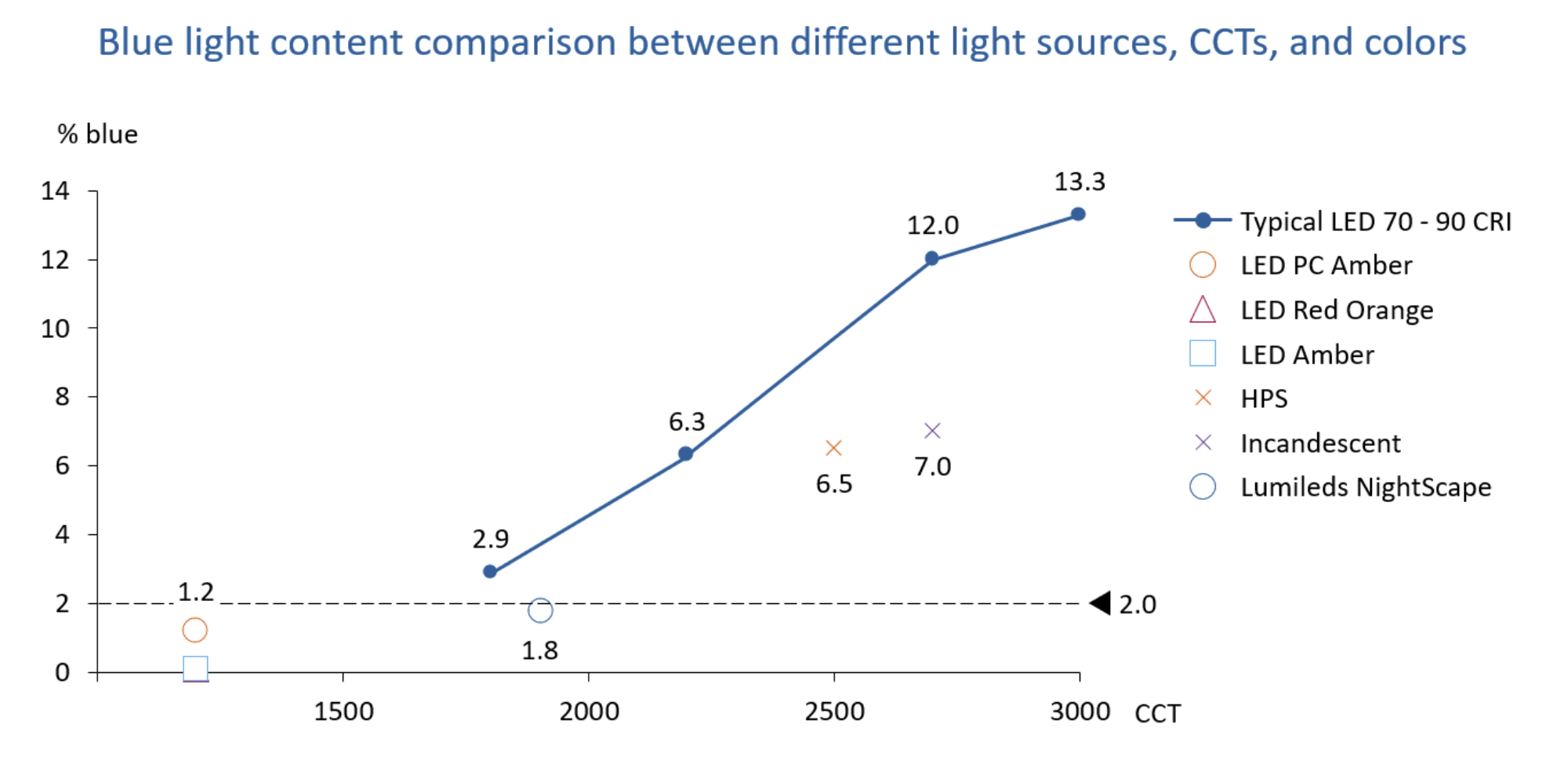More interest in melasma and hyperpigmentation tied to blue light.
A study asked “Can Light Emitted from Smartphone Screens and Taking Selfies Cause Premature Aging and Wrinkles?”.[1]
We’re not getting enough natural light during the day, but are overexposed to very high levels of artificial light at night. Our skin is a major target of oxidative stress and the link between aging and oxidative stress is well documented. And obviously, what we call “aging” by looking at the skin is caused by oxidative stress.
What is blue light?
Blue light has shorter wavelengths (400-490 nm) and the photons in blue light have higher energy, so it has the potential to do more damage in the upper layers of the skin.
Blue light in the evening is associated with an increased risk of obesity, poor metabolic and cardiovascular health as well as poor sleep in general. “Light is important, but the timing of it is also crucial,
Blue light emitted by screen devices disrupts our circadian rhythms, leading to mitochondrial health disasters. Article says "still a great deal of controversy" blue light, but we know LEDs directly affects cellular function.
Why is blue light a concern?
It is stating the obvious but we evolved under the Sun with exposure to broad-spectrum light during the day, followed by a rest and repair cycle at night. Now we have round-the-clock exposure to light sources we’re still learning about.
Blue light from the sun always comes balanced by red light.
In fact, it is only around 2011 that LEDs were introduced to the market and became popularised for households!
The unnatural exposure to intense blue light is already associated with chronic diseases such as cardiovascular diseases, cancer, obesity, insulin resistance/type 2 diabetes, and cancer — all linked to mitochondrial dysfunction.
However, one most substantial evidence for electronic blue light’s impact on skin is how it creates hyperpigmentation.
In 2023, a study of 41 women found that exposure to low doses of blue light triggered or worsened pigmentation in those who tanned easily – Fitzpatrick skin types three to six. (The Fitzpatrick scale measures the risk of sunburns on skin tone, with Fitzpatrick 1 denoting extremely fair skin and Fitzpatrick 6 denoting extremely deep skin.)
Worse, blue light damages the extracellular matrix, which is the collagen layer, through oxidation.
In a 2018 article, an article published in the Journal of Biomedical Physics and Engineering found that as little as one hour of exposure to electronic devices is enough to generate reactive oxygen species, triggering inflammation and exacerbating skin ageing.
“Selfies can age the skin”
Due to detrimental effects of irradiation with electromagnetic fields (EMFs) and visible light (VL), frequent exposure to VL and EMFs produced by smartphones can lead to skin damage and accelerated ageing (promoting wrinkles). In an evocative piece, Sarah Knapton, the Science Editor of the Telegraph idescribed how “Selfies can age the skin and cause wrinkles, warn dermatologists”, published on June 17, 2016.
“It’s not documented, but in my clinical observation, I can tell whether someone uses their right hand or left hand to hold their phone. You start to see dull dirty looking texture that you cannot identify on one side of the face.” — renowned dermatolgist Dr Zein Obagi, founder of the Obagi Skin health Institute in Beverly Hills.[3]
By the time you’re seeing damage manifest on your skin, you know it is already harming your biological systems.
Currently in the world of skincare, conventional advice continue to be sunscreen. Mineral and physical blockers, such as titanium dioxide and iron oxides provide better protection than chemical blockers, which are often chockful of other problems. Other products include blue light protective facial mists, expensive serums and lip glosses with patented ingredients that claim to “shield” us from screen damage. The beauty industry is an eye-watering multi-billion-dollar industry, and serums and moisturisers that include simple antioxidants such as vitamin C, which scavenges free radicals generated by blue light, and niacinamide, which has anti-inflammatory benefits.
sunscreen at home does not help
So we see the creep of skincare and beauty used to be for “a day or night out”, and then to mitigate outdoor pollution and stress, to mitigate toxic exposures at bed. It used to be that we bought antioxidants during the day to protect from pollution, and ingredients like retinol at night. Now, there’s more oxidative stress in our home environments, so it’s worth including antioxidants in your nighttime routine. You’ll find beauty articles describing the best routine to offset melasma risks from blue light from screens and laptops, by needing sunscreen application both indoors and outdoors.
But blue light from devices is a different wavelength of radiation so sunscreen will not block it.
You could try to saturate your skin with anti-oxidants to mop up the free radicals, to try to help prevent DNA damage from electronic devices. But the artificial electromagnetic field is altering the minerals in the skin. A sunscreen will not protect you.
Rather than going beyond skin-deep to explore the deeper effects of blue light on our bodies, we’re running off for another band-aid to patch what we perceive as only ugly sights.
References
Arjmandi N, Mortazavi G, Zarei S, Faraz M, Mortazavi SAR. Can Light Emitted from Smartphone Screens and Taking Selfies Cause Premature Aging and Wrinkles? J Biomed Phys Eng. 2018 Dec 1;8(4):447-452. PMID: 30568934; PMCID: PMC6280109.
Impact of blue light on skin pigmentation in patients with melasma. https://www.ncbi.nlm.nih.gov/pmc/articles/PMC10315449/













